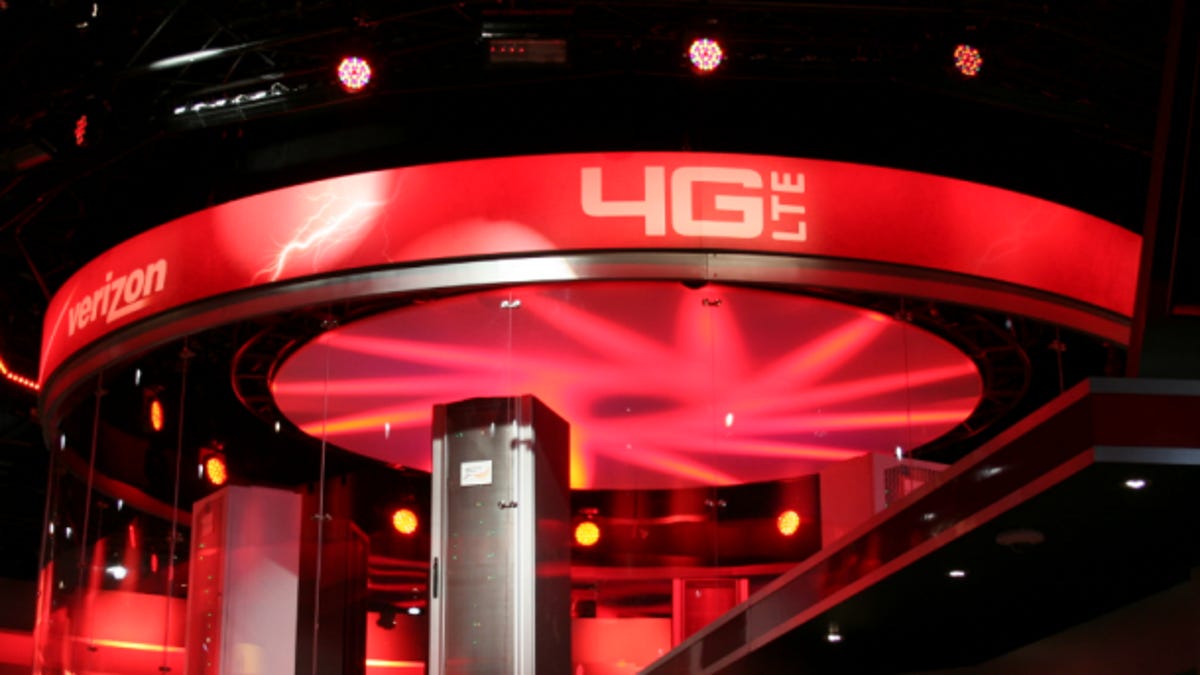Verizon's 4G LTE blankets two-thirds of U.S. population
On Thursday, the wireless carrier will expand its LTE coverage into 27 new markets and 44 existing markets as it maintains its lead over rivals AT&T and Sprint Nextel.

Verizon Wireless continues to put its foot on the pedal when it comes to its 4G LTE deployment.
On Thursday, the company plans to expand into 27 new markets and improve coverage in 44 existing markets, blanketing two-thirds of the U.S. population.
Such a rapid deployment underscores the importance of offering a high-speed wireless service, particularly as more consumers browse the Internet, watch videos, and exchange messages on increasingly sophisticated mobile devices. For Verizon, LTE has been its premium product, and it continues to maintain a significant lead over its competitors. With the new cities, the carrier will have covered 230 markets in the nation.
The most recent wave of new markets represents one of the biggest rollouts yet for the carrier, which has moved with unprecedented speed to provide LTE coverage.
The next closest competitor, AT&T, has covered 32 markets with LTE, and plans to double its coverage by the end of of the year. Its newer network, however, beat Verizon in a speed test conducted by PCWorld. Sprint Nextel plans to have a handful of markets with LTE by the end of the first half of the year, and will start selling 4G LTE smartphones such as the Samsung
While LTE was an important distinction for Verizon last year, it's become more of a must-have offering for the carriers, with every major one committing to the technology. T-Mobile USA also has plans to move to 4G LTE next year, but will rely on HSPA+, a technology it calls 4G, for the time being.
"This year represents a year of growth and investment in our 4G LTE network, which stands out by virtue of its superb combination of coverage, speed and the variety of devices that we offer customers," said David Small, chief technical officer of Verizon Wireless.
By the end of the year, Verizon's LTE service will be available in more than 400 markets and to more than 260 million people. The carrier has said that all of its smartphones will be 4G this year.
Verizon said it sold 2.3 million 4G LTE devices in the fourth quarter. The company plans to release its first-quarter results on Thursday.
On Thursday, the company will introduce its 4G LTE network to Auburn and Tuscaloosa, Ala.; Pine Bluff, Siloam Springs and Van Buren, Ark.; Visalia/Porterville, Calif.; Fort Walton Beach and Ocala, Fla.; Brunswick, LaGrange and Macon/Warner Robins, Ga.; Peoria, Ill.; Kokomo/Logansport and Marion, Ind.; Dodge City, Garden City, Great Bend and Hays, Kan.; Salisbury, Md.; Cattaraugus/Allegany, N.Y.; Sandusky, Ohio; Ardmore and Ponca City, Okla.; Salem/Albany/Corvallis, Ore.; Pierre, S.D.; and Big Springs and Tyler, Texas.
The company will also expand its network in Phoenix and Tucson, Ariz.; Bakersfield, Fresno, Modesto, Sacramento, Salinas/Monterey, San Diego, San Francisco, San Luis Obispo and Stockton, Calif.; Colorado Springs and Fort Collins/Loveland, Colo.; Sarasota/Bradenton, Fla.; Boise/Nampa, Idaho; Carbondale/Marion and Rockford, Ill.; Fort Wayne and Indianapolis, Ind.; Des Moines, Iowa; Boston and Worcester, Mass.; Detroit, Mich.; St. Louis, Mo.; Las Vegas and Reno, Nev.; Manchester/Nashua, N.H.; Albuquerque and Santa Fe, N.M.; Buffalo/Niagara Falls and New York, N.Y.; Akron, Cleveland and Columbus, Ohio; Oklahoma City and Tulsa, Okla.; Portland, Ore.; Providence/Pawtucket, R.I.; Nashville, Tenn.; El Paso, Texas; Provo/Orem and Salt Lake City/Ogden, Utah; and Olympia/Centralia and Spokane, Wash.
Updated at 10:29 a.m. PT: with cities getting 4G LTE.

